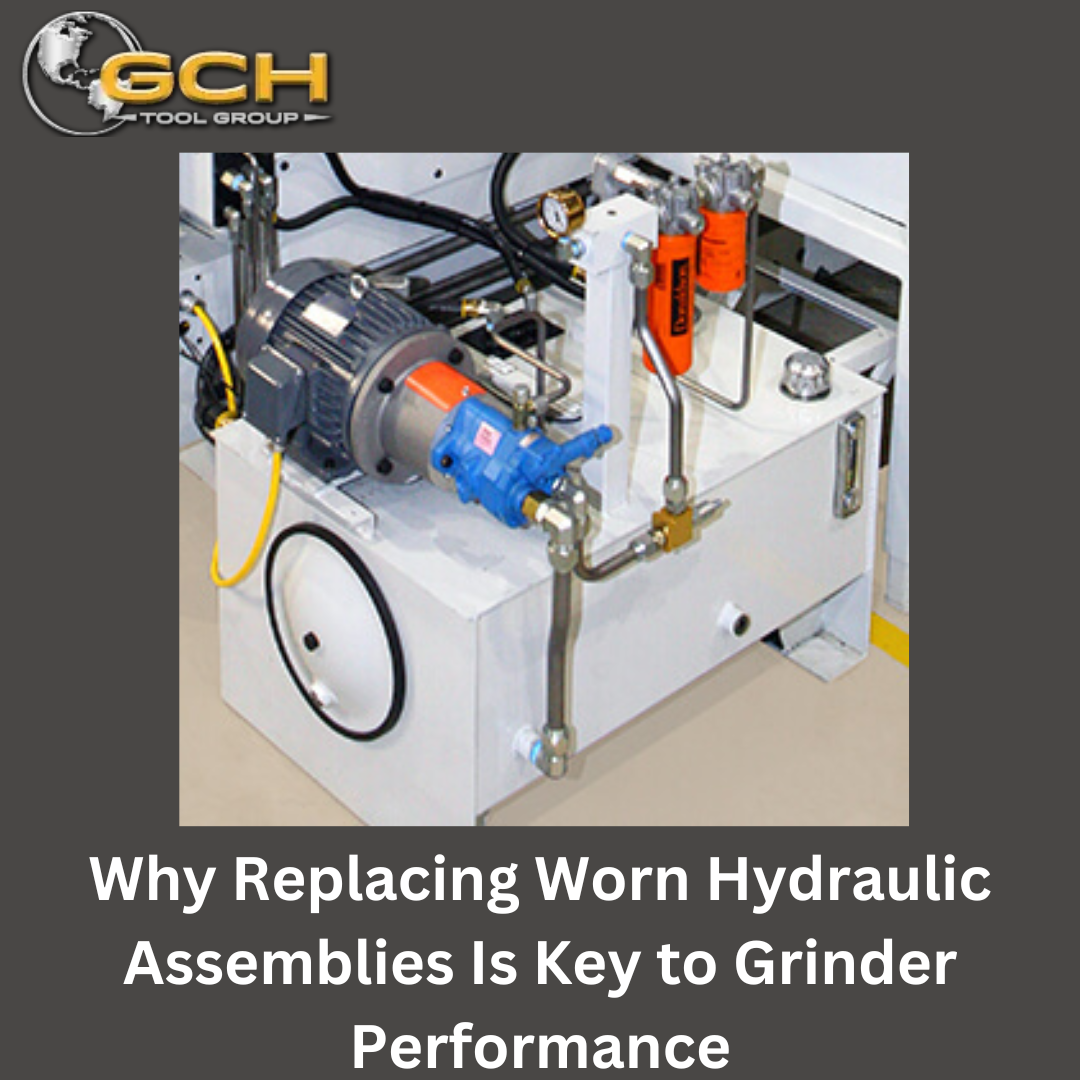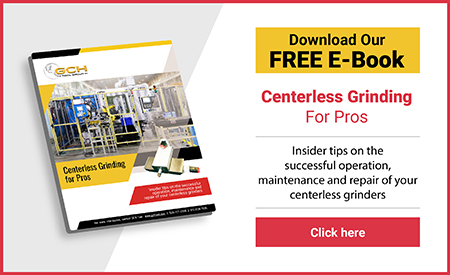Why Replacing Worn Hydraulic Assemblies Is Key to Grinder Performance

Your grinding operation runs smoothly until it doesn’t. One moment your grinder is producing precision parts, the next it’s making unusual noises and struggling to maintain proper feed rates. More often than not, the culprit lies within your hydraulic assemblies—the heart of your grinder that powers everything from workhead rotation to table movement and infeed operations.
Understanding when to replace worn hydraulic assemblies and maintaining proper coolant filtration systems isn’t just about preventing breakdowns—it’s about ensuring consistent performance and extending the life of your grinder investment.
The Hydraulic Assembly Explained: What Powers Your Grinder’s Motion
A typical hydraulic assembly in a centerless grinder consists of several interconnected components that work together to provide the power and precision your grinding operations demand. The oil pump serves as the primary driver, circulating pressurized fluid throughout the system. Filters keep the hydraulic fluid clean and free from contaminants that could damage sensitive components.
The reservoir stores hydraulic fluid and allows for thermal expansion, while valves control the flow direction and regulate pressure. Hoses and actuators complete the circuit, delivering hydraulic power to where it’s needed most—your grinding spindles, feed mechanisms, and positioning systems.
The interconnected nature of these components means that a single failing part can trigger system-wide inefficiency or complete downtime. A clogged filter can starve your pump of clean fluid, while a failing pump can cause pressure drops throughout the entire system.
Warning Signs of Hydraulic Pump or Fluid Failure
Recognizing the early warning signs of hydraulic pump failure can save you thousands in repair costs and prevent unexpected downtime.
- Loud whining or knocking: sounds often indicate serious internal problems. Whining typically results from air bubbles in the hydraulic fluid, known as cavitation, while knocking suggests worn or misaligned internal pump components that require immediate attention.
- Overheating: Heat buildup occurs when poor fluid flow, contaminated oil, or worn pump parts force the system to work harder than designed. This overheating rapidly degrades hydraulic fluid quality and accelerates wear on seals and bearings throughout your hydraulic assemblies.
- Pressure Drops: This manifests as inconsistent or low hydraulic pressure, often pointing to a failing pump, clogged filters, or internal leaks. You’ll notice symptoms like slow machine response, weakened actuation, or inability to maintain proper grinding forces.
- Slow Feed/Motion: Slow feed or motion problems frequently stem from insufficient oil flow caused by worn pump vanes or fluid starvation. This affects both grinding accuracy and cycle times, ultimately increasing your operational downtime.
- Fluid Discoloration: Dark, cloudy, milky, or burnt-smelling oil indicates oxidation, water contamination, or thermal breakdown—all signs that your hydraulic fluid and potentially your entire system need attention.
Fluid Analysis & Filtration: The Hidden Factors Behind Hydraulic Assembly Damage
One of the biggest grinder hydraulic problems is dirty or degraded hydraulic oil. Contaminated fluid carries abrasive particles that wear down pump components, valves, and seals. This promotes corrosion and reduces the lubricating properties of your hydraulic fluid.
Your hydraulic filtration system plays a crucial role in protecting these expensive components. Over time, filters become clogged with contaminants, reducing oil flow and adding pressure stress to your pumps. This creates a cascading effect where your pump works harder, generates more heat, and degrades fluid quality even faster.
Conducting regular fluid analyses can help you identify contamination levels before they cause permanent damage to your grinder replacement parts. Testing for particle count, water content, and acid levels provides early warning of system problems.
Proactive Maintenance Tips to Protect Your Hydraulic Assembly
Here are some tips to help you protect your hydraulic assembly:
- Conduct Regular Fluid Checks: Monitor fluid levels daily and change hydraulic oil according to the manufacturer’s specifications or based on your fluid analysis results.
- Establish a Filter Replacement Schedule: Don’t wait for filters to become completely clogged—replace them proactively to maintain optimal flow rates and system pressure.
- Perform Weekly System Pressure Monitoring: This helps identify developing problems before they cause major failures. Document pressure readings and investigate any unexplained drops or fluctuations immediately.
- Inspect Hoses, Seals, and Connectors: Routine inspections prevent small leaks from becoming major problems. Look for signs of wear, cracking, or fluid seepage that could indicate impending failure.
- Use High-Quality, Compatible Grinder Parts and Hydraulic Components: Cheap alternatives may save money initially, but often cost more in the long run through premature failure and increased downtime.
The GCH Advantage: Your Trusted Partner for Grinder Hydraulic Assemblies
GCH Tool Group specializes in providing OEM-quality hydraulic oil pumps and complete hydraulic assemblies ready for installation. Whether you need grinder spare parts for emergency repairs or planning preventive maintenance, GCH maintains an extensive inventory for all major grinding systems.
Our expert team helps identify the right grinder accessories and replacement components for your specific equipment. From coolant filtration systems to complete hydraulic assemblies, GCH provides the grinder upgrades and parts you need to maintain peak performance.
Need help with your grinder’s hydraulic system? Contact GCH Tool Group today!

